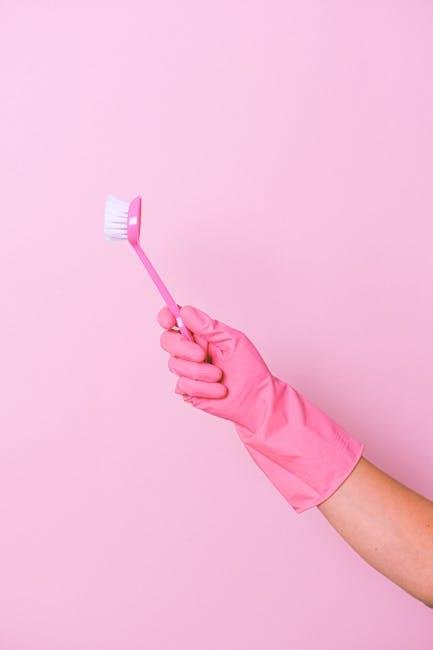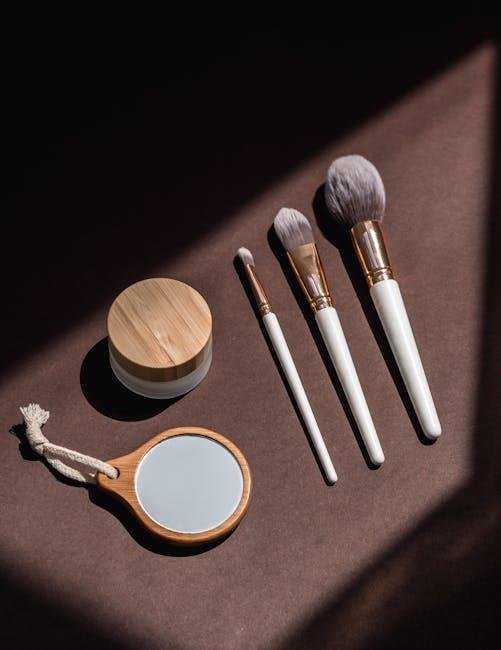In the realm of beauty and artistry, brushes serve as essential tools, bridging the gap between inventiveness and reality. Whether you’re an aspiring makeup artist, a seasoned painter, or a dedicated hobbyist, the health of yoru brushes can significantly impact your craft.However, maintaining their pristine condition while ensuring they remain free of harmful germs and residues can often feel like a delicate balancing act. fear not, for the quest to disinfect brushes without causing damage is not only achievable but also crucial for prolonging their lifespan and ensuring optimal performance. In this article, we will explore effective and gentle methods to cleanse your brushes thoroughly, safeguarding both your tools and the creativity they help unleash. Join us as we delve into the art of brush care, ensuring that your trusty companions remain as vibrant as your artistry.
Essential Steps for Preparing Your Brushes for Disinfection
Before diving into the disinfection process, itS essential to prepare your brushes meticulously. Start by gathering your supplies—you’ll need a gentle cleanser, a clean towel, and possibly a container for soaking. Once you have everything ready, begin by removing any excess product from the bristles. You can do this by gently wiping the brush against the side of a clean tissue or paper towel. This step is crucial, as it prevents residue from interfering with the disinfection process.
Next, take a moment to inspect your brushes for any signs of damage or wear. If you notice any frayed bristles or loose ferrules, it’s best to set those brushes aside for repair rather than disinfection. For brushes that are in good condition, proceed to the next step: rinsing. Use lukewarm water to rinse the bristles, ensuring that the water runs from the ferrule to the tips. This prevents moisture from seeping into the ferrule, which could compromise the adhesive.After rinsing, gently reshape the bristles and lay them flat on a clean towel to dry, ready for the next phase of disinfection.

Understanding the Best Disinfectants for Brush Care
When it comes to disinfecting your brushes, selecting the right disinfectant is crucial for maintaining their integrity and longevity. Alcohol-based solutions are a popular choice due to their effectiveness in killing bacteria and viruses without causing damage to synthetic fibers. Additionally, antibacterial soaps can be gentle yet potent, allowing you to keep your brushes clean while being safe for their bristles. It’s vital to avoid harsh chemicals like bleach, as these can break down bristle materials and lead to inferior performance.
To maximize the effectiveness of your disinfectants, consider using them in conjunction with a few best practices. Here’s a quick guide to some safe options:
| Disinfectant Type | Effective On | Usage Tips |
|---|---|---|
| Isopropyl Alcohol | Bacteria, viruses | Use in diluted form (70% recommended) and rinse thoroughly. |
| Antibacterial Soap | general dirt and bacteria | Mix with warm water; deep clean with a gentle scrub. |
| vinegar | Fungal spores, smell | Mix with water and soak for a few minutes. |
Always remember to rinse your brushes thoroughly after disinfection to remove any residues that might affect their performance. A well-cared-for brush not only applies product more evenly but also lasts much longer, making the investment in the right disinfectant well worth it.

Techniques to Safely Disinfect Different Types of Brushes
Disinfecting brushes requires a gentle approach to avoid damaging their bristles and handles. Start by gathering your cleaning tools: a mild soap or brush cleaner,warm water,and a clean microfiber cloth. For natural bristle brushes, it’s important to avoid soaking them in water for extended periods, as this can lead to deformation. Instead, prepare a cleaning solution by mixing warm water with a few drops of soap. Dip the bristles in the solution, giving them a soft swirl to dislodge dirt and makeup, then rinse carefully under running water, ensuring the bristles are pointed downwards to maintain their shape.
For synthetic brushes, you can safely use alcohol-based disinfectants. Simply spritz or dip the bristles into a mixture of equal parts rubbing alcohol and water. Allow the solution to work for about 10 seconds, then gently wipe the bristles on a clean cloth to remove any residue. When dealing with specialty brushes—like those for nail art or painting—it’s best to read specific care instructions as some materials might have unique requirements. Below is a quick reference table for common brush types and their ideal disinfecting methods:
| Brush Type | Cleaning Method |
|---|---|
| Natural Hair Brushes | Soap & Water Dip |
| Synthetic Brushes | alcohol Solution Spritz |
| Nail Art Brushes | Dedicated Brush Cleaner |
| paint Brushes | Soap & Warm Water rinse |

Aftercare Tips to Maintain Brush Integrity and Longevity
Maintaining the integrity and longevity of your brushes is essential for achieving flawless results and ensuring your tools remain in top condition. After disinfecting, allow your brushes to dry naturally in a well-ventilated area, keeping the bristles facing downward to prevent water from seeping into the ferrule. This will help to preserve the glue that holds the bristles in place, extending the lifespan of your brushes. Incorporating a few best practices into your regular cleaning routine can also contribute significantly to their durability.
To further care for your brushes, consider the following tips:
- Use a gentle shampoo: Opt for a mild, sulfate-free shampoo to cleanse your brushes without stripping the bristles of their natural oils.
- Regular cleaning schedule: Aim to clean your brushes at least once a week to prevent product buildup and maintain their performance.
- Store properly: When storing your brushes, keep them upright in a container or brush holder to prevent bending and misshaping of the bristles.
Additionally, avoid leaving your brushes submerged in water for long periods as this can lead to mold growth and degrade the bristles. For a quick check on the overall health of your brushes, refer to the table below that highlights signs of wear and essential care actions:
| Signs of Wear | Recommended Actions |
|---|---|
| Frayed bristles | Trim lightly or replace if significantly worn. |
| Loose bristles | Re-glue if possible or consider retirement. |
| Discoloration | Clean with a gentle solution more frequently. |
Closing Remarks
As we wrap up our exploration of disinfecting brushes without causing harm, it’s clear that maintaining the integrity of your tools is just as crucial as keeping them clean.By implementing gentle yet effective methods, you can extend the lifespan of your brushes while ensuring they remain free from harmful bacteria and residues. Remember,the key lies in choosing the right products and techniques tailored to the materials of your brushes. With a little care and attention, your brushes can serve you well for years to come, allowing your creativity to flow uninterrupted. So, go ahead, give your brushes the TLC they deserve, and unleash your artistic potential with confidence!
